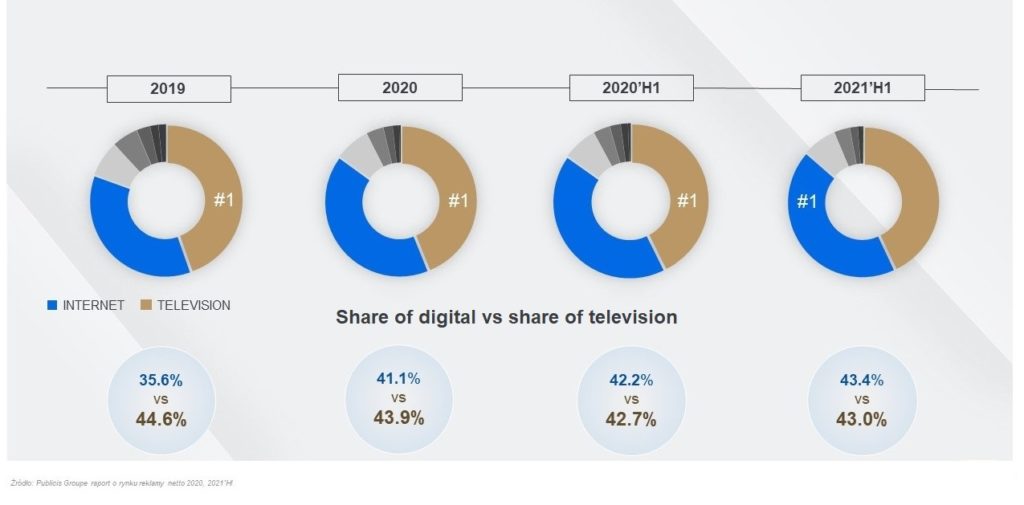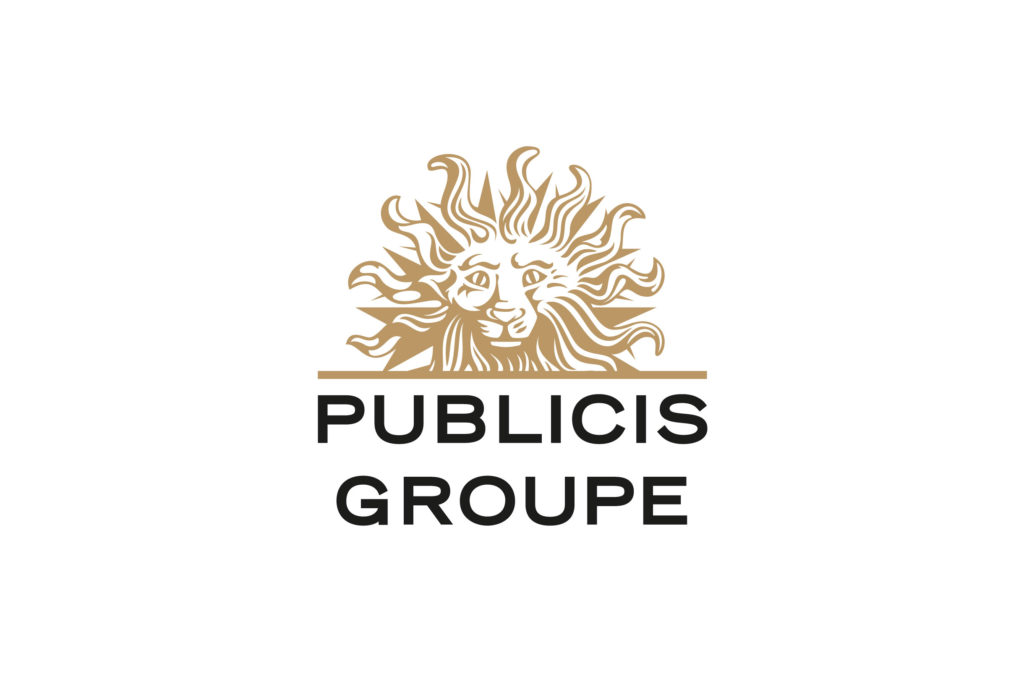The past year and a half has brought many lasting changes, both in the behavior of consumers themselves and in the actions of marketers. In 2020, there were 1.3 million new users on the Polish Internet, a large part of whom were over 55 years old. In the era of the pandemic, we moved a lot of activity to the Internet, which also benefited the e-commerce market, growing by 45% per year. Thanks to the enormous acceleration of digitalisation processes caused by the pandemic, in the first half of this year the value of online advertising reached a record PLN 2.9 billion, growing by double digits. Thus, it dethroned television, taking the first place with over a 43% share in the media-mix.

As Data Science Research (Publicis Groupe), we conduct dozens of media communication effectiveness studies every year, answering marketers’ questions about which campaign elements would affect brands’ KPIs, in what way and how strongly. As a result, we know what worked optimally and what is worth repeating, and what can be improved or even abandoned in future campaigns.
When analyzing the results of crossmedia research, we always ask ourselves: Why?
- WHY did display advertising not increase brand awareness or purchase intent in this campaign? Is it the fault of the selected formats?
- WHY did online video impact familiarity but not increase purchase intent? Did the length of copy available to the customer make a big difference here, and if so, how important was it?
Looking for the most up-to-date and reliable answers that help us better plan our campaigns, we have periodically, for over a dozen years, conducted Beyond Awareness Studies (BAS).
BAS is a series of experimental research projects that uncover how information is processed depending on the communication channel and format and their various combinations. The uniqueness of BAS studies lies in isolating the influence of the medium from the message, and we measure the effectiveness of the role of channels in terms of sales generation, image potential and awareness building.
Beyond Awareness Studies are designed specifically for media agencies and focus on uncovering the specific mechanisms that govern advertising in media such as TV, radio, OOH and digital.
Mechanisms the knowledge of which is in the DNA of every planner and strategist, and which – in the current world changing at dizzying speed – need to be discovered again and again.
In the latest BAS 2.0 Digital study we focused on online communication, and its results were revealing for us – media market researchers with several years of experience. Responses to the survey clearly show how to achieve the marketing goals of a brand by planning a display and/or video, mixing formats, places of broadcast, messages and costs in such a way to maximize the effect for a given budget. This shows the potential offered by the data we gathered and its use in the work of every planner in Publicis Groupe.
Beata Sokołowska Research Director, Data Science Publicis Groupe
EXPERIMENTAL FORM OF RESEARCH
When analyzing the digital ecosystem, we focused on 5 key questions:
- How does the display ad format used affect effectiveness?
- Is it worth paying extra for ads above the news line?
- What works better – display, video or a mix?
- What is the effectiveness of video spots depending on their length?
- What is the effectiveness of advertising depending on the type of communication?
In an experimental study, as in clinical trials, there is a control group and a test group. Both groups are the same in terms of demographic characteristics, but they differ in the stimulus. In our case, the difference is contact with the form of communication under study in the test group or lack thereof in the case of the control group.
In the latest Beyond Awareness Study 2.0 Digital, to find answers to the 5 questions posed, we tested 12 campaigns, each with 17 forms of advertising that differed in format, message, and location. The experimental scheme consisted of 196 unique combinations, and the study involved 2232 respondents from all over Poland.
For each of them we prepared a realistic and clickable mock-up of a horizontal portal, with a homepage and subpages, after which they scrolled in search of information.
The respondents’ task was to find information in the form of a lead on the home page, click on it and read it on the subpage. As in real life, the main page and subpages were full of ads, and during the survey each respondent had two contacts with the 6 studied ads.
BAS 2.0 DIGITAL RESULTS
The website framework does not allow us to share the entirety of the non-obvious digital advertising patterns we observed, so we will focus on two of them.
More and more often we hear that display advertising, such as rectangle or half page, is unnoticeable in the flood of ads on the Internet, that its glory days are long gone and that now video advertising is the remedy for being noticed – and most importantly – effective.
Well, our study has disproved this belief. Display is noticeable. It’s true that 30% of respondents remembered a specific display ad, and as many as 55% remembered a video ad, but if we take into account the cost of building reach, display is optimal.

Interestingly, it turned out that the impact of digital formats is also influenced by the gender of the recipient, and this applies exactly to the shortest of video formats. The impact of 6 second ads on brand awareness is greater among women than men. Specifically: 39% (in women) to 17% (in men) for Top of Mind (ToM) and 56% (in women) to 45% (in men) for Spontaneous Brand Awareness (SBA). These results cannot be explained by differences in the control group. Moreover, it is clear from these results that the 6 second spots influenced awareness among women (in the control group: 28% ToM and 44% SBA), but had no effect on awareness among men (no differences between control and those exposed to the 6-second ad). Does this suggest that strong brands should produce short-form videos when the goal is to increase brand awareness among a female target audience? Evidently it makes sense and answering this and similar questions contained in BAS 2.0 Digital brings our clients closer to a perfectly planned campaign.

MORE ABOUT DATA SCIENCE RESEARCH
Beyond Awareness Studies 2.0 Digital is just one of dozens of consumer studies conducted by Data Science Publicis Groupe. We specialize in communications research thanks to our proximity to media and communications agencies.
We are the first to research emerging communication channels in the space and their impact on building brand equity, e.g. content from TV (the first product placement surveyed was in 2008), radio and internet, to influencer content and podcasts, recently added to our list.
We analyze the effectiveness and impact on brand equity of not only new forms but also channels such as DOOH on small screens or Tik Tok.We develop research that responds to clients’ needs – such as Effie Study – a neat study that provides the numbers needed to apply for awards or Agile Creative Testing – quantitative testing of creations in 3 days.
We perfected cross-media research, which by replacing the non-existent single-source media measurement and answering the question of how a multi-media campaign affected brand KPIs and how each touchpoint and medium worked together and separately, allows for better communication planning. Aggregating results from multiple CrossMedia Studies allows you to create campaign scenarios showing how selected media combinations will impact brand KPIs.
We search for insights, test ideas and creative concepts on our qualitative research community The Street, which has existed for 10 years, so that clients are shown those with the greatest potential.
If you are interested in BAS 2.0 Digital or other research from our offer we invite you to contact us: beata.sokolowska@publicisgroupe.com


